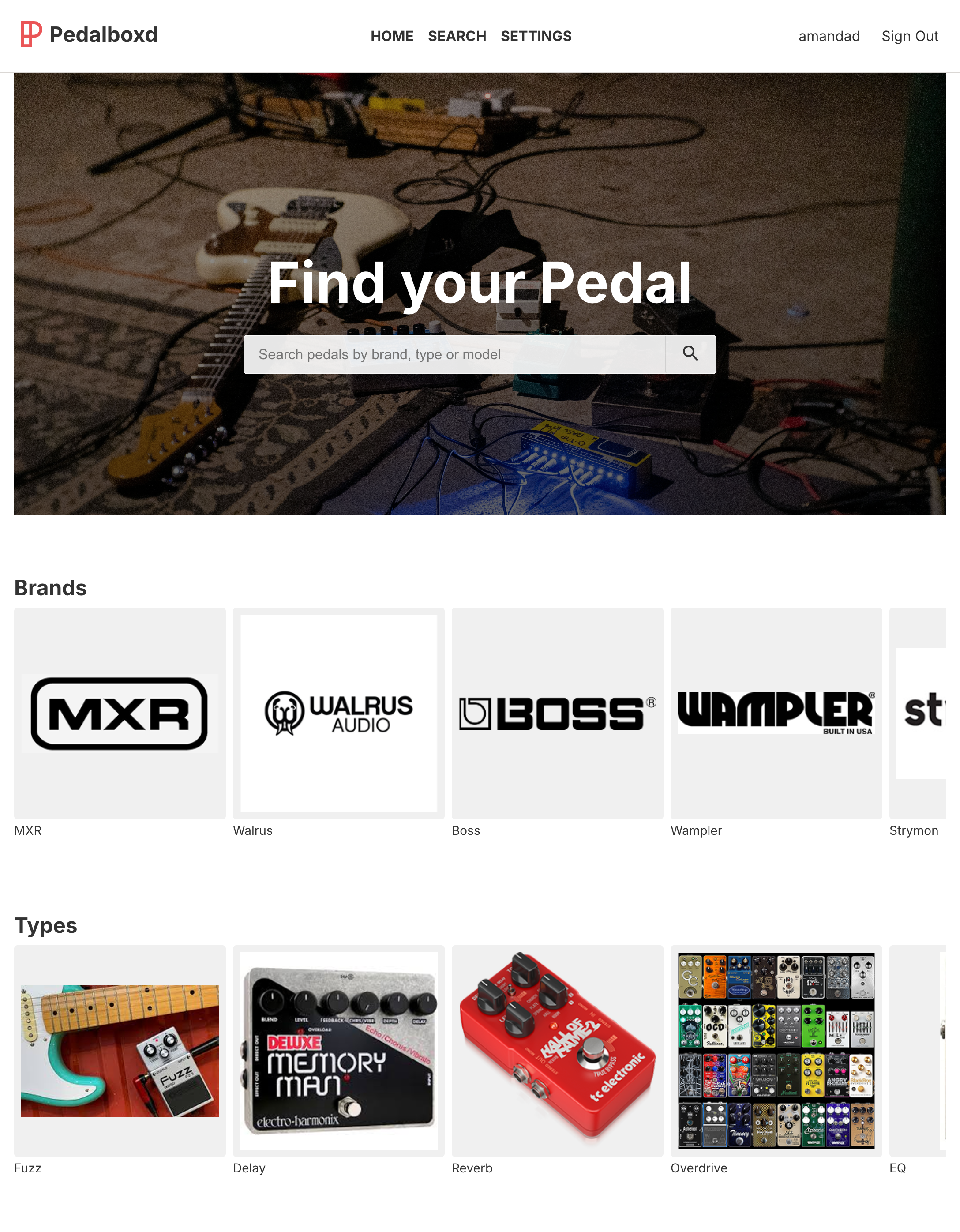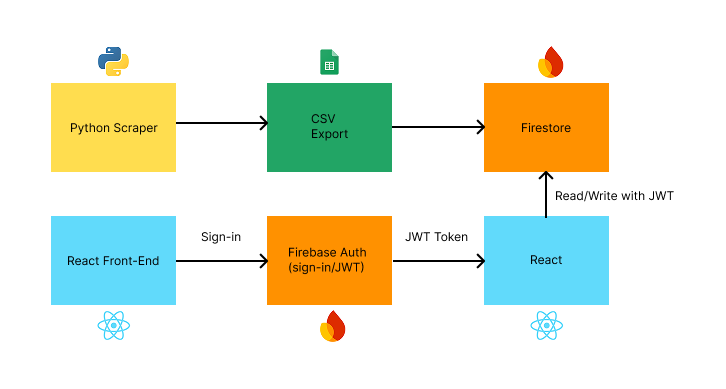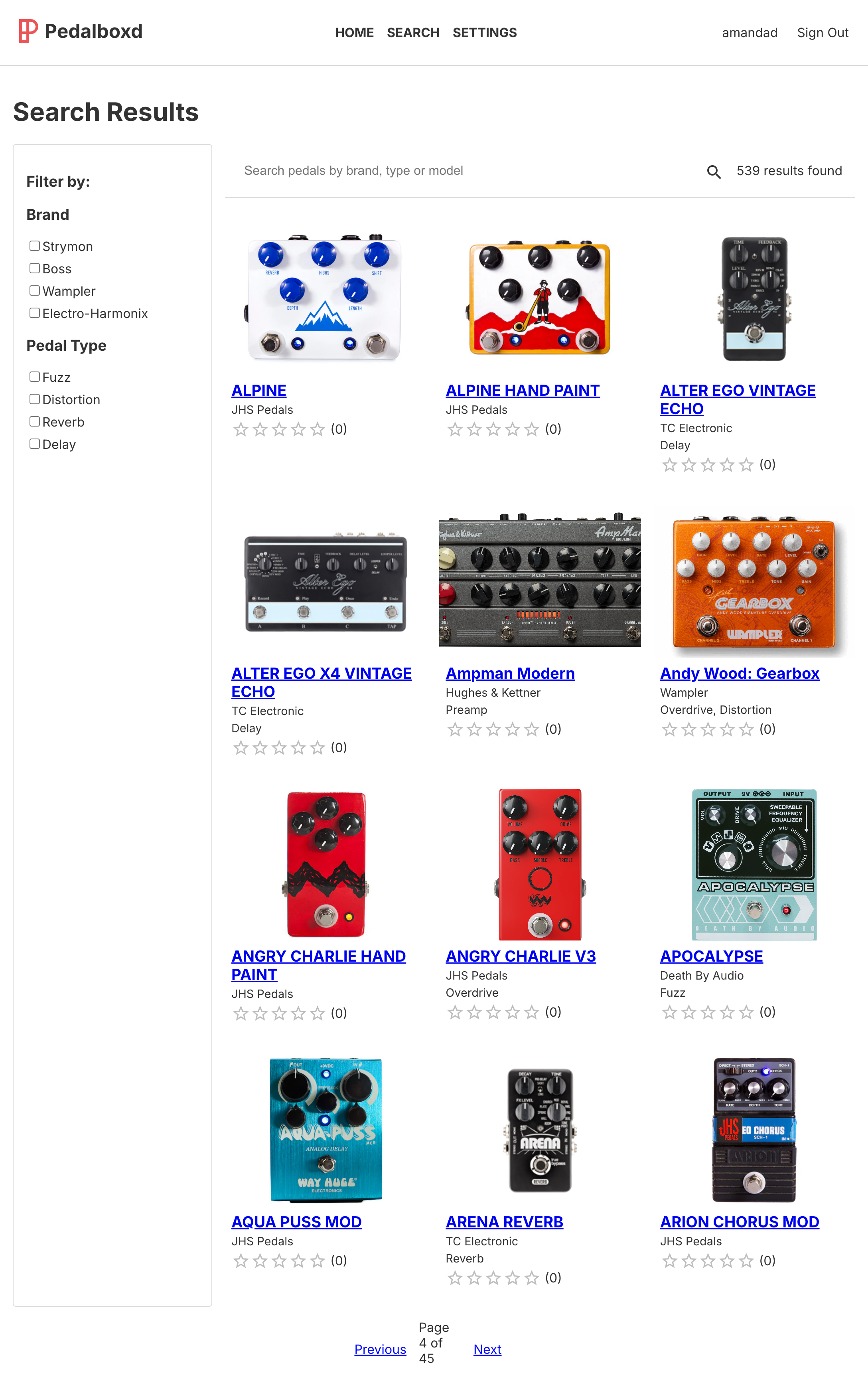Pedalboxd: Building a Guitar Pedal Discovery & Management App
Project Overview
Pedalboxd is a web app that helps guitarists and bassists discover, compare, and manage their pedal collections. It combines a clean, responsive React front end with a flexible data-ingestion pipeline that pulls specs, images, and pricing from multiple pedal manufacturers (Wampler, TC Electronic, Death By Audio, JHS, and more).
My Role
UX Designer: Conducted competitor research, sketched wireframes & user flows, built interactive prototypes in Figma, and ran informal user tests.
React Developer: Architected and implemented the production UI with React (plus CSS Modules for component-scoped styling), integrated Firestore for user collections, and built data-scraping scripts to automate pedal data imports.
Key Challenges
Data Consistency
Pedal specs, images, and pricing come from disparate sources (CSV exports, Shopify JSON APIs, custom REST endpoints).
Each brand uses different URL schemes, HTML structures, and field names.
Scalable Import Pipeline
Need to add new brands over time without rewriting the scraper from scratch.
Must dedupe existing entries to avoid cluttering the database.
Intuitive UX for Complex Lists
Users should be able to filter by type (e.g. Overdrive, Delay, Modulation), price range, and brand.
Provide a clear way to add/remove pedals from personal “boarding” collections.
UX Design Process
Discovery & Research
Reviewed top guitar-gear sites (Reverb, Sweetwater) and competitor apps.
Interviewed hobbyist guitarists to understand how they track and discover pedals.
User Flows & Wireframes
Mapped primary flows: browsing pedals, viewing details, saving to collection.
Sketched low-fi wireframes in Figma to explore layout, filtering controls, and card designs.
Interactive Prototype & Testing
Built a clickable Figma prototype with core screens (Home, Pedal Details, My Board).
Ran 5 informal usability sessions, iterated on navigation (moved filters into a sticky sidebar) and pedal-card hierarchy (image, name, price, core specs).
Technical Implementation
Data Pipeline
CSV Imports (for legacy brands):
Node.js scripts that parse vendor CSVs, normalize IDs, and upsert into Firestore—preventing duplicates by using consistent document IDs.
Python Scrapers (for modern Shopify catalogs):
TC Electronic: Hit their REST endpoint (/search/products-result), parsed JSON for modelCode, specs, and images.
Death By Audio & JHS:
Used Shopify’s public APIs (/products.json + /products/{handle}.json) to fetch full catalogs, extract body_html, price, and images.
Stripped HTML to plain text with BeautifulSoup’s get_text() for clean “Specs” fields.
Automation:
Stored scripts under scripts/ with requirements.txt and a virtual environment.
Added yarn scrape:tc and yarn scrape:db NPM scripts to rebuild data on-demand.
Front-End (React + CSS Modules)
Styling:
CSS Modules for encapsulated, component-level styles (no global leaks).
Used BEM conventions for any shared utility classes.
Component Library:
Custom React components: PedalCard, FilterPanel, Modal, etc.
Lucide-React icons for clear, scalable iconography.
State Management:
React Query for data fetching & caching; Context API for user auth/collections.
Filtering & Search:
Debounced free-text search across pedal names and specs.
Multi-select filters for Type, Brand, and Price bands.
Responsive Layout:
CSS Grid for the pedal-card gallery with media-queries to stack on mobile.
Modals for detail views on desktop, full-screen panels on mobile.
Outcome & Impact
Data Coverage: Automated import of 500+ pedals across 4 brands, with nightly scripts to catch new releases.
User Feedback: Beta testers praised the clean “Specs” formatting and fast filtering.
Next Steps:
Integrate user-submitted reviews & ratings.
Add “board” sharing and social features.
Explore a mobile app wrap with React Native.
Tech Stack
Front End:
React, CSS Modules, Lucide-React, React Query
Back End / Data:
Firebase Firestore, Node.js (CSV import), Python + BeautifulSoup (scrapers)
Tools:
Figma (wireframes & prototype), Git/GitHub, VS Code, Yarn/NPM scripts


